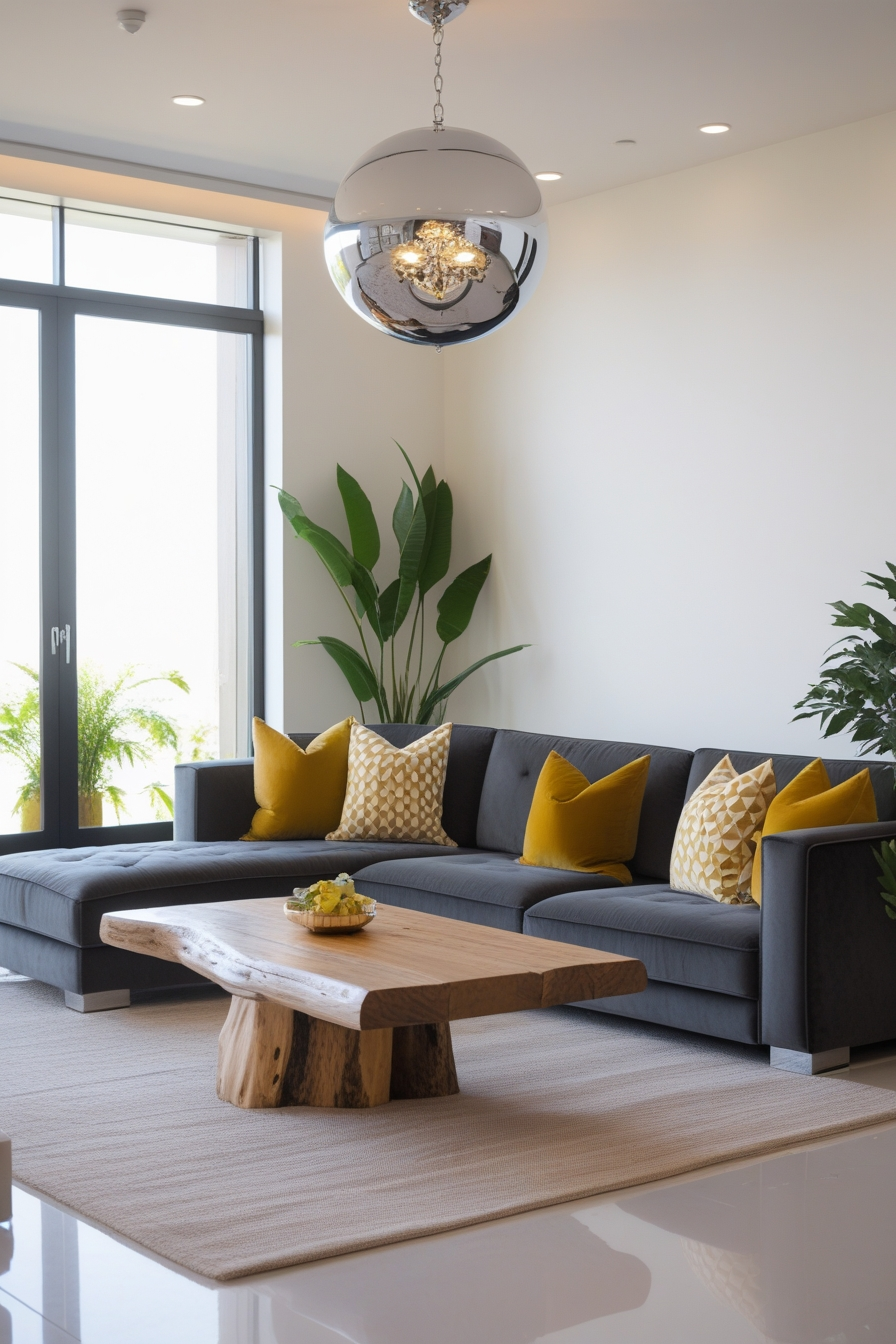Introduction
Did you know that the average person spends approximately 90% of their time indoors? Yet surprisingly, only 47% of homeowners feel truly satisfied with their interior decoration choices. The disconnect between our living spaces and our satisfaction levels raises an important question: How can we create aesthetically pleasing, functional spaces without breaking the bank? Interior decoration doesn’t have to be expensive or complicated to be effective. With thoughtful planning and creative approaches, you can transform your living spaces into stylish, comfortable environments that reflect your personality and meet your practical needs.
Essential Elements
When approaching interior decoration, several key elements come together to create a cohesive and appealing space:
- Color palettes – Foundation of your design scheme (neutrals, bold accents, or monochromatic)
- Furniture pieces – Functional items that define how spaces are used
- Lighting fixtures – Both decorative and practical lighting elements
- Textiles – Curtains, rugs, pillows, and other fabric elements
- Wall treatments – Paint, wallpaper, or decorative techniques
- Decorative accessories – Art, plants, and personal items that add character
Substitution options: Consider rental-friendly alternatives like removable wallpaper, furniture covers, or freestanding fixtures if you’re unable to make permanent changes.
Timeframe
Understanding the time investment for interior decoration projects helps set realistic expectations:
- Planning phase: 2-3 weeks for research, inspiration gathering, and concept development
- Procurement: 1-4 weeks for purchasing furniture and décor items
- Implementation: 1 day to 2 weeks depending on the scope (room refreshes vs. complete renovations)
- Total time: 3-9 weeks for a typical interior decoration project
Interestingly, studies show that thoughtfully planned interior decoration projects tend to result in spaces that remain satisfying for 5-7 years before owners desire significant changes.
Step-by-Step Instructions
Step 1: Define Your Style and Vision
Begin by identifying your preferred interior decoration style. Browse magazines, websites, and social media platforms to collect inspiration. Create a mood board that captures your aesthetic preferences, whether they lean toward minimalist, bohemian, industrial, mid-century modern, or transitional looks.
Pro tip: Don’t feel constrained to one single style! Most appealing interiors blend elements from different approaches for a personalized result that feels both fresh and timeless.
Step 2: Assess Your Space and Needs
Measure your rooms carefully and note architectural features that might influence your decoration choices. Consider how each space functions in your daily life and what improvements would make the biggest difference. Think about traffic flow, natural light sources, and existing elements you need to work with.
Ask yourself: “What activities happen in this space, and how can my interior decoration enhance rather than hinder those activities?”
Step 3: Establish a Budget
Determine how much you can realistically spend on your interior decoration project. Allocate funds to different aspects of your project, prioritizing high-impact items:
- 40% for furniture
- 20% for flooring or major surface treatments
- 15% for lighting
- 15% for textiles and window treatments
- 10% for accessories and artwork
Remember: Interior decoration is an investment in your quality of life, but it doesn’t require excessive spending to be successful.
Step 4: Select a Color Scheme
Choose a color palette that serves as the foundation for your interior decoration plan. Consider:
- 60-30-10 rule: 60% dominant color (walls, large furniture), 30% secondary color (textiles, accent furniture), and 10% accent color (accessories)
- Color psychology: Blues for calm, yellows for energy, greens for balance
- Existing elements: Flooring, architectural features, or furniture pieces you’re keeping
Test paint samples on your walls at different times of day to see how lighting affects the appearance before committing.
Step 5: Plan Your Furniture Layout
Before purchasing anything, create a scaled furniture plan. Consider the size and proportion of pieces in relation to your room. Allow for comfortable traffic flow (18-24 inches between furniture pieces) and functional groupings that facilitate conversation and activities.
Digital tip: Try free room-planning apps to visualize furniture arrangements before moving heavy pieces around.
Step 6: Layer in Lighting
Incorporate multiple lighting sources to create depth and functionality in your interior decoration scheme:
- Ambient lighting: Overhead fixtures that provide general illumination
- Task lighting: Focused light for specific activities (reading, cooking)
- Accent lighting: Decorative options that highlight architectural features or artwork
Energy-efficient LED options can reduce your environmental impact while providing better lighting quality for your interior decoration project.
Step 7: Add Textiles and Soft Furnishings
Introduce textiles to add warmth, texture, and acoustic benefits to your spaces:
- Window treatments that control light and provide privacy
- Area rugs to define spaces and add comfort underfoot
- Throw pillows and blankets for color, pattern, and coziness
- Upholstery fabrics that balance durability with aesthetic appeal
Budget Considerations
Interior decoration can be adapted to virtually any budget level through thoughtful planning:
- High-impact, low-cost elements: Paint, rearranged furniture, updated hardware
- Investment pieces worth splurging on: Quality sofa, supportive mattress, versatile storage
- Areas to save: Trendy accessories, purely decorative items, items rarely seen or used
Budget LevelFocus AreasEstimated Cost RangeMinimalDIY paint, rearranging, selective new accessories$500-1,500 per roomModerateNew key furniture, lighting upgrades, quality textiles$2,000-5,000 per roomPremiumCustom solutions, designer pieces, architectural changes$8,000-20,000+ per room
Sustainable Alternatives for Interior Decoration
Environmentally conscious interior decoration is increasingly important as consumers recognize the impact of their choices:
- Choose natural, renewable materials like bamboo, cork, or reclaimed wood
- Select furniture pieces made with sustainable manufacturing practices
- Opt for low-VOC paints and adhesives to improve indoor air quality
- Incorporate energy-efficient appliances and fixtures
- Consider vintage or secondhand items to reduce consumer waste
Studies show that sustainable interior decoration choices not only benefit the environment but can reduce energy costs by up to 30% and improve indoor air quality significantly.
Styling Suggestions
Once the fundamental interior decoration elements are in place, consider these styling approaches to elevate your spaces:
- Follow the rule of three when grouping decorative objects
- Vary heights, textures, and shapes within vignettes
- Include plants to add life, color, and improved air quality
- Create visual balance by distributing visual weight throughout the room
- Incorporate personal items that tell your story and make the space unique to you
Remember: The most successful interior decoration reflects the personalities and lifestyles of the people who live in the space.
Common Mistakes to Avoid
Even experienced decorators can fall into these interior decoration pitfalls:
- Incorrect scaling: Choosing furniture that’s too large or small for the space
- Insufficient lighting: Relying solely on one overhead fixture
- Pushing all furniture against walls: Creating spaces that feel uninviting
- Neglecting window treatments: Missing opportunities for style and light control
- Over-coordinating: Creating spaces that look like catalog displays rather than homes
- Ignoring functionality: Prioritizing aesthetics over how you actually live
Professional insight: The most common interior decoration regret reported by homeowners is choosing paint colors without proper testing (78%), followed by purchasing furniture without measuring spaces accurately (65%).
Maintenance Tips for Your Decorated Spaces
Protect your interior decoration investments with these maintenance practices:
- Rotate textiles seasonally to distribute wear and refresh the look
- Schedule quarterly deep cleaning of upholstery and window treatments
- Touch up paint scuffs promptly to prevent more significant damage
- Rearrange accessories periodically to prevent dust accumulation and refresh your perspective
- Create a maintenance calendar that reminds you to check for needed repairs
Conclusion
Interior decoration is both art and science—blending aesthetic principles with practical considerations to create spaces that support and enhance your lifestyle. By thoughtfully approaching color, furniture, lighting, and accessories, you can create rooms that feel both personally meaningful and visually appealing. The most successful interior decoration reflects not just current trends but your authentic self and how you truly live.
Ready to transform your space? Start with one room, apply these interior decoration principles, and watch as your home becomes more functional, beautiful, and uniquely yours.
FAQs
Q: How often should I update my interior decoration? A: Major interior decoration refreshes typically occur every 5-7 years, though small seasonal updates can keep spaces feeling current. Focus on easily changeable elements like pillows, throws, and small accessories for frequent updates.
Q: What’s the best room to start with when decorating a home? A: Begin your interior decoration journey with the room where you spend the most time—often the living room or primary bedroom. Success in one space will build confidence and clarify your preferences for tackling other areas.
Q: How can I make a small space look larger through interior decoration? A: Strategic interior decoration can visually expand small spaces through light paint colors, properly scaled furniture, mirrors to reflect light, and consistent flooring throughout connecting spaces.
Q: Is it necessary to hire an interior decorator? A: While professional help can be valuable, particularly for complex projects, many successful interior decoration projects are completely DIY. Consider a consultation for specific challenges while handling the broader project yourself.
Q: How do I blend my style with my partner’s in our interior decoration? A: Focus on finding common ground in your interior decoration preferences, perhaps through a shared color palette while allowing each person designated areas to express their unique style. Compromise and communication are essential elements of shared interior decoration projects.

